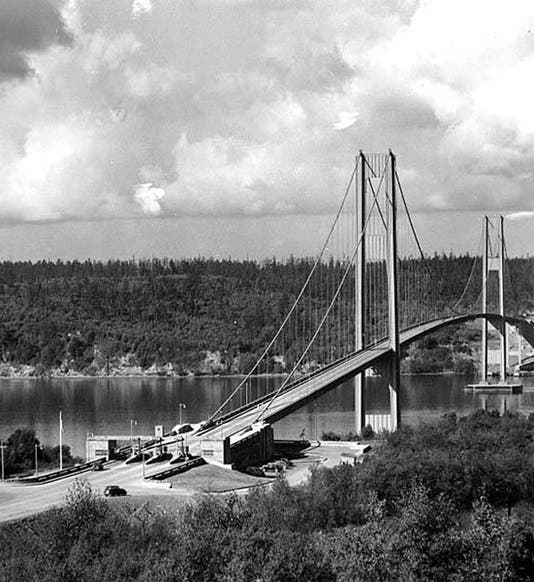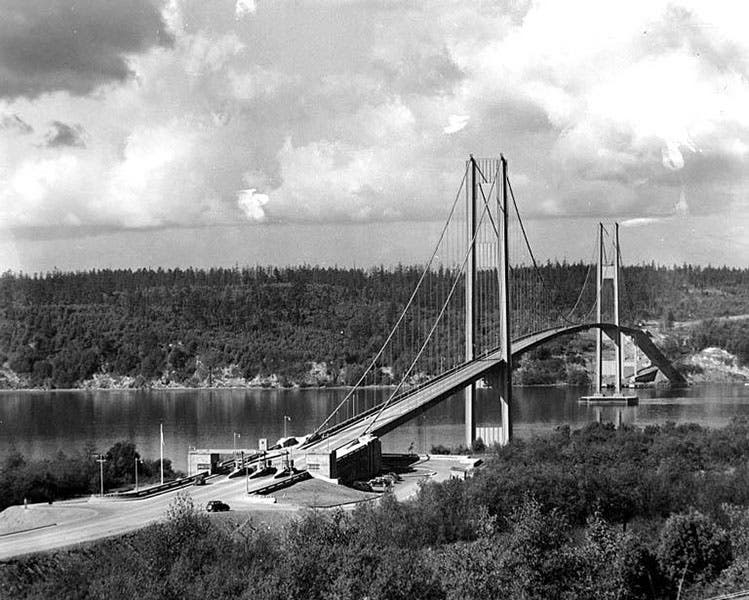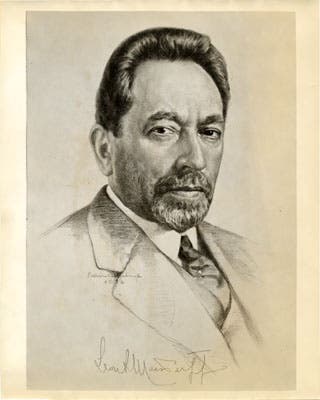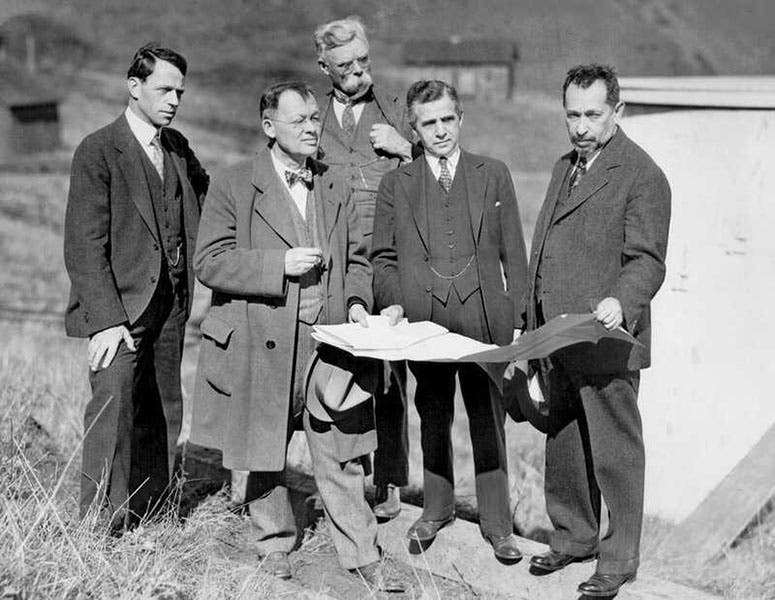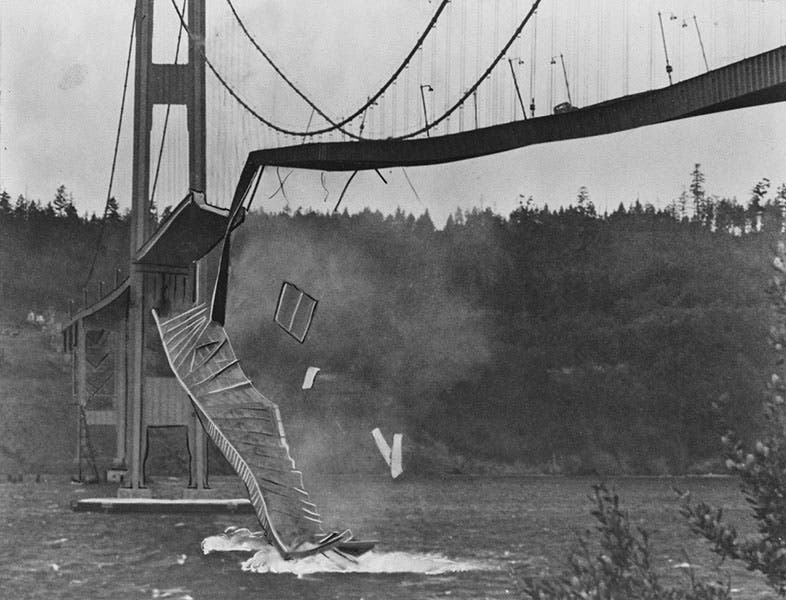Scientist of the Day - Leon Moisseiff
Leon Moisseiff, an American civil engineer, was born Nov. 10, 1872. Moisseiff was a Latvian Jew, born in Riga, who came to the United States with his parents in 1891, and then studied civil engineering at Columbia University. His career goal was simple: to design bridges. He worked as an assistant engineer on the Manhattan Bridge over the East River, opened in 1909, and really came into his own as design engineer on the Ben Franklin bridge in Philadelphia, opened in 1926. He then joined Charles Alton Ellis as a consulting engineer on the design of the Golden Gate Bridge, which opened in 1937.
Moisseiff loved long, lean suspension bridges, like the Golden Gate Bridge, and he was a strong advocate for steel bridges, with minimal use of stone and concrete. He believed, with Ellis, that longer, thinner bridges that could deflect and move in response to stresses, were superior to heavier rigid bridges. In a group photograph taken around 1930 (third image), Moisseiff is second from left, with Ellis at far left; the individual in the center, Joseph Strauss, was for a long time improperly credited as principal designer of the Golden Gate Bridge, before that title was given to Ellis (and by association Moisseiff) in 2007, and Strauss was moved to the wall of shame. The figure second from right, incidentally, is Othmar Amman, designer of the George Washington Bridge and five other New York City bridges.
There is another group photograph that includes Moisseiff, where he is at the right, next to Strauss (fourth image). This photograph pops up repeatedly if you search for Charles Ellis, which is interesting, since Ellis is not in it; he was fired by Strauss in 1931, and so the photo probably postdates his expulsion. But you can see Amman again, at the far left.
Had he stopped with the Golden Gate, Moisseiff’s career would have been a huge success by any standards. But he set his sights on building the most beautiful bridge in the world, and the location chosen was the Tacoma Narrows, a strait that separates Tacoma, Washington, from Kitsap Peninsula in Puget Sound. The Tacoma Narrows Bridge was breathtakingly long and devilishly lean, a mere two lanes across. The bridge was opened on July 1, 1940, and elegant it certainly was, as we see in our opening image, a photo taken in June 1940, just before the bridge opened for traffic.
Unfortunately, Moisseiff underestimated the effect on the bridge of the considerable winds that sweep through the Narrows. Or rather, he did not understand the aerodynamic nature of those winds. No bridge engineer did, although several aeronautical engineers had published articles in the 1930s trying to impress on bridge engineers that wind forces were not just sideways deflections, but had aerodynamic effects, but it was without effect. No one, for example, was testing bridge models in wind tunnels, like aircraft designers were doing. Moisseiff thought his bridge could withstand straight line winds of up to 120 mph. And maybe it could have. But it never got the chance.
The Tacoma Narrows Bridge swayed right from the beginning, but so did the Golden Gate Bridge – the capacity to move was built into the design, and no one seemed worried. However, on this day, Nov. 7, 1940, as a 40-mph wind blew from the side, it set up something we now call aeroelastic flutter, a kind of resonance in the bridge. A twisting motion began in the roadway that matched exactly the resonant vibrating frequency of the bridge, and in just over an hour, the central span twisted free of the cables and fell into the water. The collapse of the bridge itself would probably have doomed Moisseiff's career, but further insult was added by the presence of a University of Washington engineer, Frederick B. Farquharson, with his camera, who recorded the entire debacle on film. Not only is the torsional motion captured with nauseating effect, but there is a lone car on the bridge, with a dog inside that could not be rescued and which perished in the collapse. The film has been shown as a hubris-deflator to would-be engineers for 80 years now, so the disaster is not even close to being forgotten. There are a number of versions of the Farquharson film on YouTube, but most have been edited or overdubbed; this one is a contemporary newsreel, relatively unedited, and although it only runs for just over a minute, that is still long enough to effectively convey the extent of the disaster.
Moisseiff died just three years later, in 1943, his successful bridges forgotten. Fortunately, he is now back in the textbook accounts of his earlier bridges – he really was a visionary design engineer. He is buried in Mount Hebron Cemetery in Flushing, New York.
William B. Ashworth, Jr., Consultant for the History of Science, Linda Hall Library and Associate Professor emeritus, Department of History, University of Missouri-Kansas City. Comments or corrections are welcome; please direct to ashworthw@umkc.edu.

